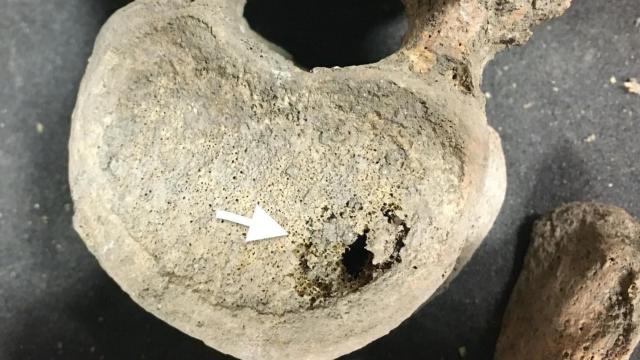Cancer may have been a bigger menace in medieval times than previously assumed, new research this week suggests. The study, based on X-ray and CT scans of preserved bones, estimates that around one in every 10 residents of medieval Britain died with cancer in their body.
The first recorded accounts of cancer date back to Ancient Egypt more than 5,000 years ago. But it’s long been thought that cancer remained relatively rare in humans until modern times, in large part due to our longer lifespans. Other trends that began to emerge in the 18th century, like exposure to more environmental pollutants as industrialisation expanded and the increased popularity of smoking, probably played a part, too.
But this new study, published Friday in the journal Cancer, suggests that cancer has been a regular feature of people’s lives for quite some time.
Researchers in the UK examined the skeletons of 143 people excavated from six medieval cemeteries located around the city of Cambridge; these people had died between the 6th and 16th centuries. They then analysed the bones using medical imaging, looking closely for traces of advanced cancer that might not have appeared on the surface.
Most cancers start somewhere else in the body besides bone, but some of these soft-tissue tumours will then spread to a person’s bones, leaving behind lesions that can be spotted through medical imaging. Based on the amount of cancer the team found in these bones, they tried to extrapolate the baseline level of cancer among medieval people in the area.
“We think the total proportion of the medieval population that probably suffered with a cancer somewhere in their body was between 9-14%,” said study author Piers Mitchell, a researcher from Cambridge University’s Department of Archaeology, in a statement released by the university.
The researchers say theirs is the first study of its kind to use X-rays and CT scans to estimate cancer incidence in historic times. If their findings are valid, it would eclipse previous estimates of the cancer rate back then by around tenfold.
The authors caution that their research has some limitations. Even CT scans aren’t foolproof at confirming cancer, for instance, and while their study sample does stretch across centuries, it’s still fairly limited in its size and scope. The best way to confirm their findings, they say, is to conduct similar studies using other collections of ancient skeletons in different parts of the world and at different points in history.
And just because cancer may have been more common centuries ago than we thought, that doesn’t mean it’s not still a lot more common now. As many as 10 million people die from cancer worldwide each year, and it’s the second leading cause of death in the U.S. Many people also develop cancer but don’t necessarily die from it, with the authors citing research showing that 40% to 50% of people in Britain today die with cancer in their system.
Regardless of just how prevalent it was, it’s clear that cancer has been an enemy of humankind for a very long time
“Until now it was thought that the most significant causes of ill health in medieval people were infectious diseases such as dysentery and bubonic plague, along with malnutrition and injuries due to accidents or warfare,”said co-author Jenna Dittmar, a medical historian from the University at Aberdeen. “We now have to add cancer as one of the major classes of disease that afflicted medieval people.”
